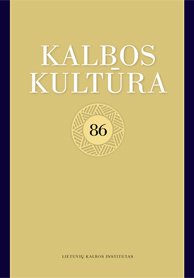Intertekstualumo formos reklamoje
Forms of Intertextuality in Advertising
Author(s): Irena SmetonienėSubject(s): Baltic Languages, Marketing / Advertising
Published by: Lietuvių Kalbos Institutas
Keywords: allusion; anti-proverbs; citation; intertextuality; proverbs; rephrasing; reference; advertising;
Summary/Abstract: Based on the qualitative method, the article analyses the forms of intertextuality in advertising in terms of rhetoric. It relies on the classification of the forms of intertextuality proposed by R. Koženiauskienė and concludes that various types of intertextuality help the author of an advertisement to highlight the properties of the item being advertised, to raise interest in it or to intrigue the potential buyer and to drive him/her into buying the good. The composition of the texts of different styles within the same advertisement is the form of intertextuality which issolely characteristic of advertising. The author of an advertisement may use it to present the item being advertised by thoroughly highlighting its strengths, associating it with scientific achievements and practical benefit. The key point of rephrasing is to make the addressee guess what is hidden underneath the text, what its primary source was, to remember what he/she has previously read or seen and what new meaning is assigned to its new version, to try to link several different and simultaneously similar things through associations. Anti-proverbs and allusions also require the background knowledge from the addressee; however, their primary aim is to surprise, influence by the unexpectedness of thought or even to shock. Folklore citations stand out from pure citations. By using them, the creators of advertising refer to the addressee’s attitudes according to which folklore is made of time-tested truths, which are accepted unconditionally. It is also known that folklore may serve the purpose of teaching and surprising but most importantly – it is a means to express the thought in a brief, yet effective manner.
Journal: Bendrinė kalba (iki 2014 metų – Kalbos kultūra)
- Issue Year: 2013
- Issue No: 86
- Page Range: 167-178
- Page Count: 12
- Language: Lithuanian

